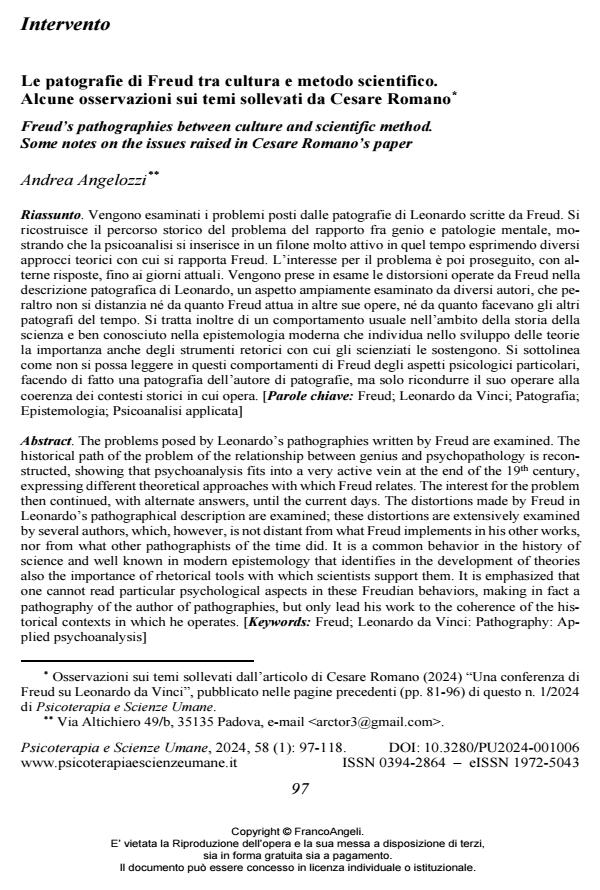Freud’s pathographies between culture and scientific method. Some notes on the issues raised in Cesare Romano’s paper
Journal title PSICOTERAPIA E SCIENZE UMANE
Author/s Andrea Angelozzi
Publishing Year 2024 Issue 2024/1
Language Italian Pages 22 P. 97-118 File size 191 KB
DOI 10.3280/PU2024-001006
DOI is like a bar code for intellectual property: to have more infomation
click here
Below, you can see the article first page
If you want to buy this article in PDF format, you can do it, following the instructions to buy download credits

FrancoAngeli is member of Publishers International Linking Association, Inc (PILA), a not-for-profit association which run the CrossRef service enabling links to and from online scholarly content.
The problems posed by Leonardo’s pathographies written by Freud are examined. The historical path of the problem of the relationship between genius and psychopathology is reconstructed, showing that psychoanalysis fits into a very active vein at the end of the 19th century, expressing different theoretical approaches with which Freud relates. The interest for the problem then con-tinued, with alternate answers, until the current days. The distortions made by Freud in Leonar-do’s pathographical description are examined; these distortions are extensively examined by sev-eral authors, which, however, is not distant from what Freud implements in his other works, nor from what other pathographists of the time did. It is a common behavior in the history of science and well known in modern epistemology that identifies in the development of theories also the importance of rhetorical tools with which scientists support them. It is emphasized that one cannot read particular psychological aspects in these Freudian behaviors, making in fact a pathography of the author of pathographies, but only lead his work to the coherence of the historical contexts in which he operates.
Keywords: Freud; Leonardo da Vinci: Pathography: Applied psychoanalysis
Andrea Angelozzi, Intervento. Le patografie di Freud tra cultura e metodo scientifico. Alcune osservazioni sui temi sollevati da Cesare Romano in "PSICOTERAPIA E SCIENZE UMANE" 1/2024, pp 97-118, DOI: 10.3280/PU2024-001006